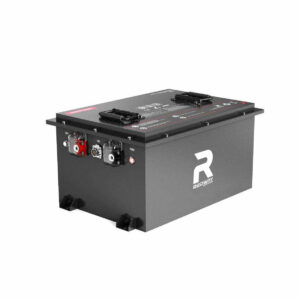What Are the Best RV Battery Types for Boosting Power Output in Large RVs?
The best RV battery types for boosting power output in large RVs include lithium-ion (LiFePO4), AGM, and deep-cycle lead-acid batteries. Lithium-ion batteries excel in energy density, longevity, and fast charging, making them ideal for high-demand setups. AGM batteries offer spill-proof maintenance and reliable performance, while deep-cycle lead-acid variants provide affordability for budget-conscious users.
How Do Lithium-Ion Batteries Enhance Power Output for Large RVs?
Lithium-ion batteries, particularly LiFePO4, deliver 2-3 times more usable capacity than lead-acid alternatives. They maintain consistent voltage levels under heavy loads, ensuring stable power for appliances like air conditioners and microwaves. With a lifespan of 3,000-5,000 cycles, these batteries reduce replacement frequency and handle rapid charging via solar or alternators.

Advanced lithium batteries feature modular designs allowing capacity expansion through parallel connections. Many models now include Bluetooth monitoring systems that provide real-time data on state-of-charge and health metrics through smartphone apps. This technology enables precise energy management for power-intensive setups like RV offices or entertainment systems. Recent advancements in cathode materials have improved cold-weather performance, with some models operating efficiently at -20°C (-4°F).
What Safety Features Are Critical for High-Power RV Batteries?
Built-in battery management systems (BMS) prevent overcharging, overheating, and short circuits. Thermal runaway protection is vital for lithium-ion batteries, while AGM and lead-acid require vented compartments to avoid gas buildup. Flame-retardant casing and waterproof ratings (IP67+) ensure safe operation in diverse RV environments.
How Can Battery Capacity (Ah) and Voltage Impact RV Power Output?
Battery capacity (measured in amp-hours, Ah) determines how long an RV can run appliances before recharging. Higher Ah ratings extend usage time. Voltage (typically 12V or 24V systems) affects compatibility with inverters and solar setups. Combining high-capacity batteries in parallel or series configurations boosts total power reserves for large RVs.
| Appliance | Power Draw | Runtime on 300Ah Battery |
|---|---|---|
| LED Lights | 10W | 300 hours |
| RV Refrigerator | 150W | 20 hours |
| Air Conditioner | 1,500W | 2 hours |
Expert Views
“Modern RV batteries are evolving beyond basic energy storage. At Redway, we’ve seen lithium-ion adoption surge 300% since 2020, driven by demand for power-hungry amenities like induction cooktops and 4G routers. The key is matching battery chemistry to usage patterns—weekend warriors benefit from AGM, while full-timers need lithium’s endurance.”
– Redway Power Systems Engineer
FAQs
- How long do RV batteries typically last?
- Lithium-ion: 10+ years; AGM: 4-6 years; Lead-acid: 2-4 years.
- Can I mix different battery types in my RV?
- No—different chemistries require separate charging systems to avoid damage.
- What’s the ideal battery temperature range?
- Lithium-ion: -4°F to 140°F; AGM/Lead-acid: 32°F to 104°F.
